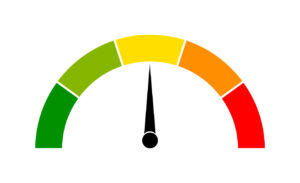Steps to develop and maintain a meaningful brand purpose
Corporate social responsibility is nothing new. Here’s how the experts say your organization can prove it lives up to its words.

It’s no secret that consumers expect more out of organizations these days. From taking a stand on social issues to addressing environmental responsibility, a company’s purpose strategy is the backbone of what builds brand trust.
Just look at Patagonia’s well-received commitment to fighting climate change—or Meta’s heavy-handed attempts to avoid taking a stance, and thereby allowing the spread of violent and hateful rhetoric on its platforms. Purpose matters.
In a recent Ragan Training video, “The Future of Social Purpose: When and How to Take a Stand,” three industry leaders share best practices for developing and maintaining a meaningful brand purpose.
1. Take an inside-out approach to purpose comms.
Liz Casselli-Mechael, global head of content and digital for food and beverage giant Nestlé, advises that the future of brand purpose is dependent on organizations’ ability to look inward. In particular, commitments to workers were crucial.
As an example, Nestlé offers a generous paid parental leave package, a valuable asset to employees based in the U.S., where workers are not legally guaranteed paid family leave. Additionally, the company committed to 1:1 gender pay equity for its employees.
“What really surprised our leadership was when we were looking at [gender equality] head-to-head with a number of other things we were doing in public interest—packaging sustainability, changing our climate impact, community support, product innovation—gender pay equity came out on top as what most increased favorability for Nestlé,” Casselli-Mechael recalls.
The gender-based pay equity move was so publicly well-received that the Nestlé team was able to advocate for, and eventually implement, pay equity for underrepresented minority workers as well.
“I don’t think that’s a conversation we would have had three years prior,” Casselli-Mechael says, “and I don’t think it’s a conversation we would have been able to have without seeing and showing in the measurement how important pay equity was in the external conversation, and in helping our community and our talent pool really get to know Nestlé.”
Casselli-Mechael stresses that Nestlé’s willingness to “walk the talk” when it came to paid parental leave and pay equity helped give its purpose messaging legitimacy.
2. Consider the big picture.
Nigel Glennie, vice president of global comms at Ecolab, says both his prior work in internal communications for Hilton and his current role with Ecolab has underscored the importance of an organization’s “big picture” purpose messaging.
Glennie identifies the pandemic as what has caused many people to reevaluate their purpose on an individual level.
“We’re all really craving a connection to the big picture,” he says. “And as communicators, I think that big picture is something that’s becoming an even more critical element about work.”
While organizations often release statements on specific events or produce one-off campaigns related to their brand purpose, Glennie says it’s crucial for employees and audiences alike to feel like they’re a part of something bigger than themselves.
“We all want to be a part of something bigger, and it’s important to be able to refine and articulate that for your company: you and your company’s place in the world,” he says. “As communicators, that can really [bring] great energy into the internal, executive and public communications that you’re putting out there.”
For example, Ecolab’s “big picture” is explicitly outlined in its purpose statement: “We work with our customers to make the world cleaner, safer and healthier, to protect people and vital resources.”
3. Tailor your purpose messaging to your intended audience and culture.
Nicole Moreo, executive vice president of analytics with Ketchum, brings the conversation back to numbers. There’s no substitute for solid data when building a messaging strategy—and communicating your brand purpose is no exception.
Moreo asks comms pros to consider the goal of their purpose messaging programs or campaigns and to take into account the intended audience and cultural context (i.e., where public opinion currently lies) at the outset of the venture.
“One of the things I always say is if your goal isn’t aligned to a behavior change, a perception change, a conversion, a purchase—it’s not a good enough goal,” she says.
Moreo references the marked change in public opinion about corporate social responsibility before, during and after the murder of George Floyd and the ensuing outcry—three separate times where audiences would have had three separate responses to the same purpose messaging.
Before you make a statement, she advises, go back to the data. Perform a sentiment analysis on potential keywords included in your messaging, which will help your team better understand what drives favorability, trust and reputation for your audience—all crucial aspects of purpose messaging in a media landscape where one wrong word can easily be misinterpreted.
What does your company’s purpose messaging look like? Are you planning a change for 2022?
See our full library of presentations and conference content on Ragan Training.







